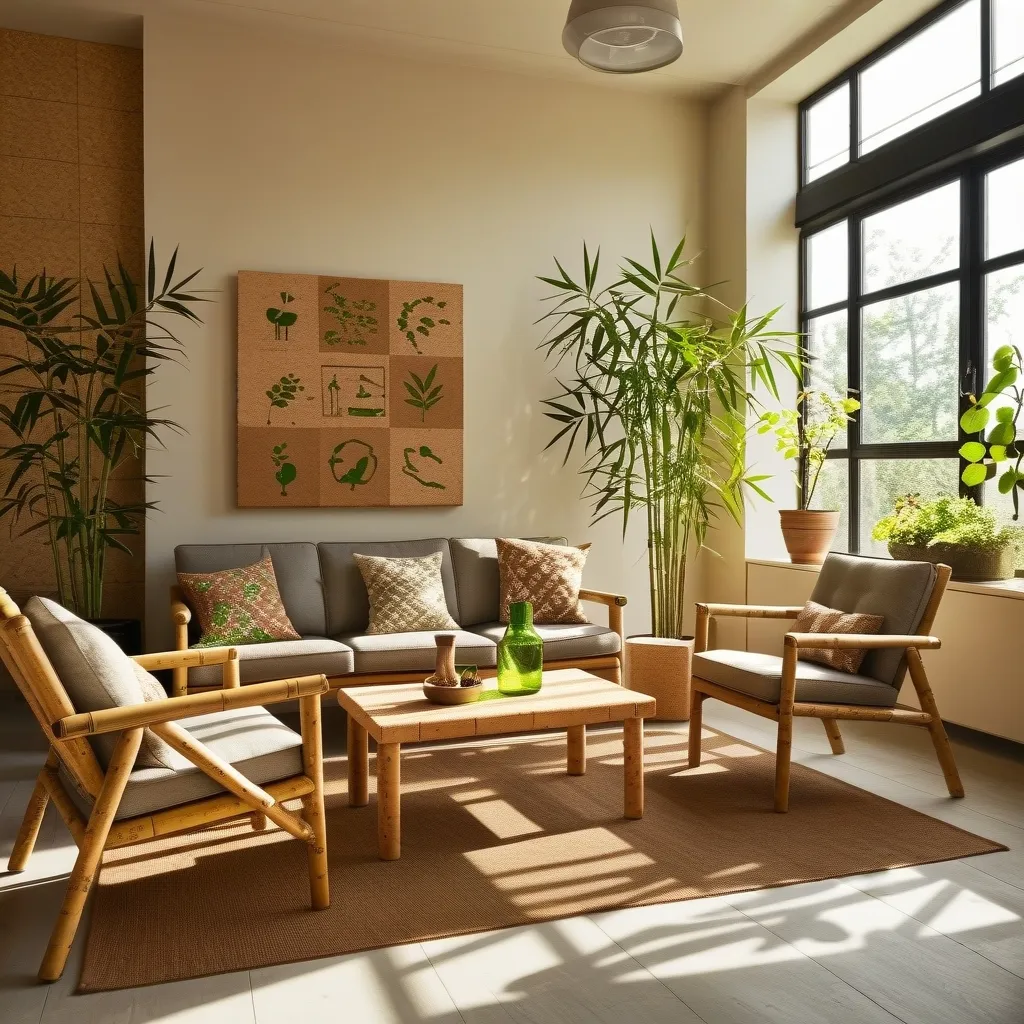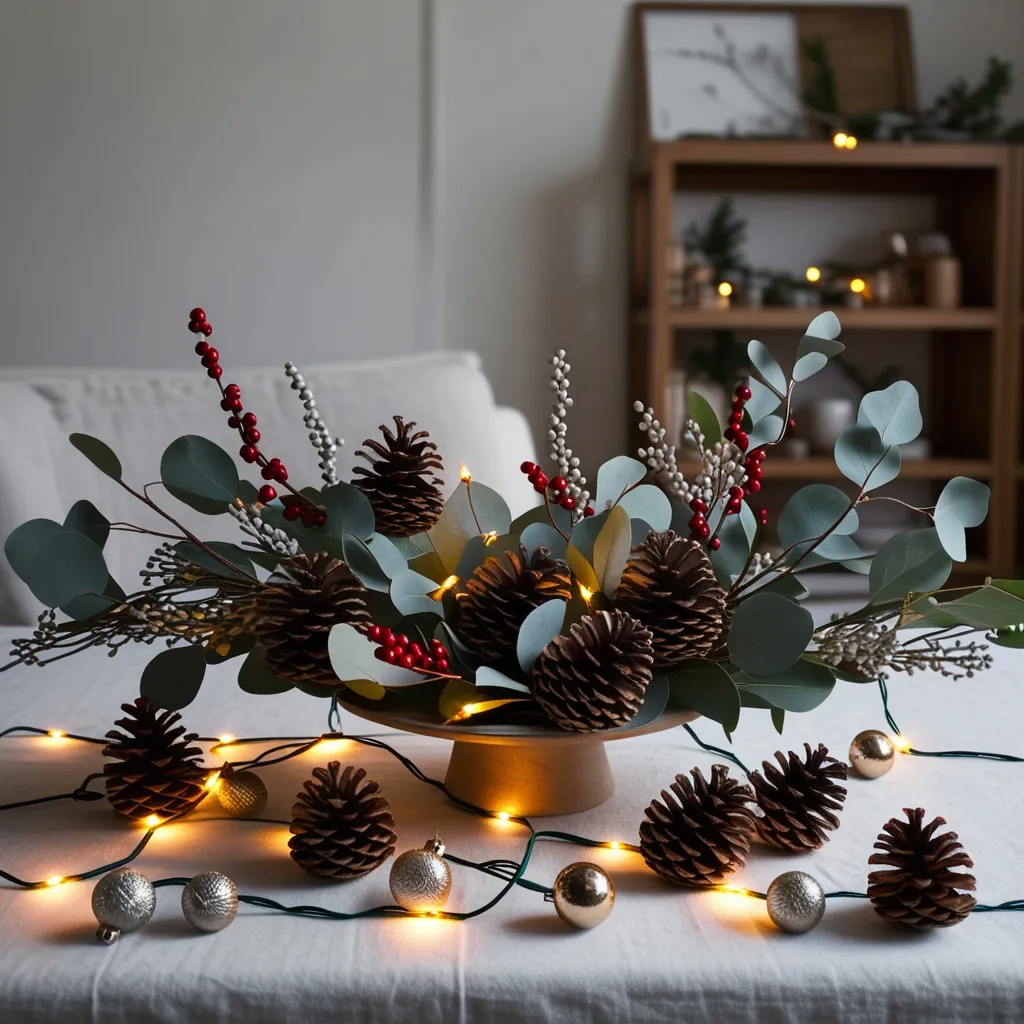Sustainable interior design has carved a significant niche in contemporary living, blending beauty, functionality, and environmental stewardship. In an era where eco-consciousness is skyrocketing, transforming living spaces with sustainable practices isn’t just fashionable – it’s essential. Let’s delve into this green journey and uncover how to revamp homes with eco-friendly materials and smart design choices.
Imagine a cozy room bathed in soft, natural light, furnished with chic, earthy pieces that tell a story. This isn’t just any room; it’s a space that echoes the principles of sustainable design. At its core are the tenets of reducing waste, reusing existing resources, and recycling. This philosophy isn’t about sacrificing comfort or elegance but about harmonizing them with a love for our planet.
First off, sustainable materials are the backbone of eco-friendly interiors. Choosing materials like bamboo, cork, and recycled glass not only celebrates nature’s bounty but also ensures durability and uniqueness. Bamboo, for instance, is a favorite in flooring due to its rapid growth and toughness. Recycled glass countertops add a splash of color and sophistication while championing the cause of recycling.
Energy efficiency is another pillar of sustainable design. Maximizing natural light, enhancing insulation, and using energy-efficient fixtures go a long way in reducing energy consumption. Think LED bulbs and smart lighting systems. These tech-savvy solutions not only cut down your electricity bill but also lessen environmental footprints, paving the way for a brighter, greener future.
Now, let’s talk about the benefits. Beyond the obvious environmental perks – like conserving resources and cutting down on landfill waste – sustainable interiors bring health, economic, and social goodies to the table. Eco-friendly designs boost indoor air quality, reducing exposure to harmful chemicals. They also bring nature indoors, which refreshes and relaxes inhabitants.
Economically, sustainable interiors save money in the long run. Energy-efficient systems slash utility bills, and durable materials mean fewer replacements and repairs. Plus, a green home can command a higher market value, making it a savvy investment for the future.
Socially, these practices foster community spirit and awareness. Local artisans and craftspeople often take center stage in sustainable design projects, promoting local economies and cultures while offering unique, handcrafted items that tell compelling stories.
Diving deeper into materials, natural and renewable options like wool, organic cotton, and jute stand out. Cork, harvested from the bark of cork oak trees, offers hypoallergenic, fire-resistant properties along with great sound and temperature insulation. It’s a win-win for style and practicality.
Recycled and reclaimed materials bring an added layer of charm. Imagine a kitchen island made from repurposed barn wood or countertops crafted from recycled glass bottles. These pieces not only reduce waste but also make for intriguing conversation starters. Semi-synthetic materials blend natural elements with synthetic components, offering versatile and sustainable options for various design needs.
When it comes to integrating these materials at home, furniture and decor choices are paramount. Look for FSC-certified wood furnishings to ensure responsible sourcing. Reclaimed wood furniture adds a rustic appeal, while eco-friendly textiles like organic cotton and hemp enhance the natural vibe. Rugs made from jute or wool and vases from recycled glass bring eco-chic to any room.
Flooring options can play a significant role in sustainability. Bamboo and cork flooring are top choices, each offering distinct benefits. Bamboo floors are robust and renewable, while cork provides excellent insulation and comfort. Recycled wood flooring gives old materials a second life, creating unique and charming spaces.
Decorative elements can also carry the torch of sustainability. Repurpose vintage fabrics into new pieces, turn heirlooms into artwork, or use antiques as functional décor. These items not only cut down on waste but also inject a personal touch into the home, adding depth and character.
Trends in sustainable interior design are continually evolving, with biophilic design leading the charge. This approach emphasizes a strong connection between indoor spaces and the natural environment through elements like natural light, plants, and organic materials. This style not only looks beautiful but also enhances well-being by bringing the outdoors inside.
Emerging materials are also pushing the boundaries of eco-friendly design. Innovations like mycelium-based products, algae-derived materials, and recycled ocean plastics are setting the stage for the next generation of sustainable interiors. These materials aren’t just environmentally friendly; they introduce new textures and aesthetics that can transform spaces in exciting ways.
The future of sustainable materials is bright, with continuous innovation making them more accessible and affordable. Closed-loop systems, where materials are perpetually reused and recycled, hold great promise. These systems could revolutionize the market by reducing costs and expanding the availability of sustainable options.
Smart technologies are also making a splash in sustainable interiors. From smart thermostats to energy-efficient appliances, these innovations help reduce energy use and environmental impact, creating homes that are not only stylish but also smart and sustainable.
Style isn’t sacrificed on the altar of sustainability. On the contrary, eco-friendly materials can elevate a space’s aesthetic. Whether it’s the timeless appeal of polished plaster, the unique textures of natural stone, or the vibrant patterns of terrazzo, sustainable choices can be incredibly chic.
In wrapping up, sustainable interior design is more than a fleeting trend; it’s an essential approach to crafting beautiful, responsible, and functional spaces. By incorporating eco-friendly materials and practices, there’s a twofold benefit: a stylish, well-designed home and a healthier planet. Transforming your living space with sustainable choices is an investment in both the present and the future, ensuring a harmonious balance between comfort, style, and environmental stewardship.






